This article was written by my Australian friend, David Young and was published in March 2010 on his excellent "Flying for Fun" Aviation Website which unfortunately has now been taken down. To overcome some problems getting it onto this site I have had to change its format but the contents remain the same. There are some overlaps with the existing article recalling the Sprint but these are not sufficient to detract from it.
Whilst we primarily remember Gordon Bedson as Car designer he was active and successful in many fields a major one being aviation from which David's interest stems.. Recalling and recording Gordon's life and achievements is, to put it mildly, a little difficult to tie down.
There are some areas of overlap with Bedson car designer but David has done a good job and I thank him for his permission to reproduce his article, on this remarkable man, for your enjoyment. (John Meadows May 2012)
My thanks to John Meadows, grandson of the founder of Henry Meadows Ltd, for the wealth of information made available to me from his archives. Also Roger Duance of Hummocks Station.
Gordon Bedson, Born 23 September 1918, died 1974
Gordon Bedson was the designer of the Resurgam, one of the best of the early ultralights of the Winton Grasshopper period when there were ridiculous weight restrictions on ultralight aircraft. As with the Winton designs, I could find very little information on the Resurgam, but the life of the designer was both interesting and surprising.
Gordon's first job was with the Miles Aircraft Company which he joined in 1936. In 1935 Gordon switched to the Airscrew Company at Weybridge, making propellers for Tiger months. The next year saw Gordon Bedson working with Robert Kronfield to develop a ground trainer based on the concept used by the German gliding community at that time. Basically it was a ground-based airframe where students could get some idea of how to use aircraft controls before they graduated to real aircraft.
By 1938 he was with the Bristol Aircraft Company training aircrew. I cannot find any trace of Gordon training as a pilot or becoming an instructor but this must have occurred sometime before 1939.
Gordon Bedson spent the World War serving in the Royal Navy Fleet Air Arm and rose to the rank of Commander. At the end of the war, he flew for BOAC as a flight engineer flying Halifax Bombers converted to passenger aircraft.
He married his wife Celia in India in 1947 and had two children, a daughter Patricia and a son John.
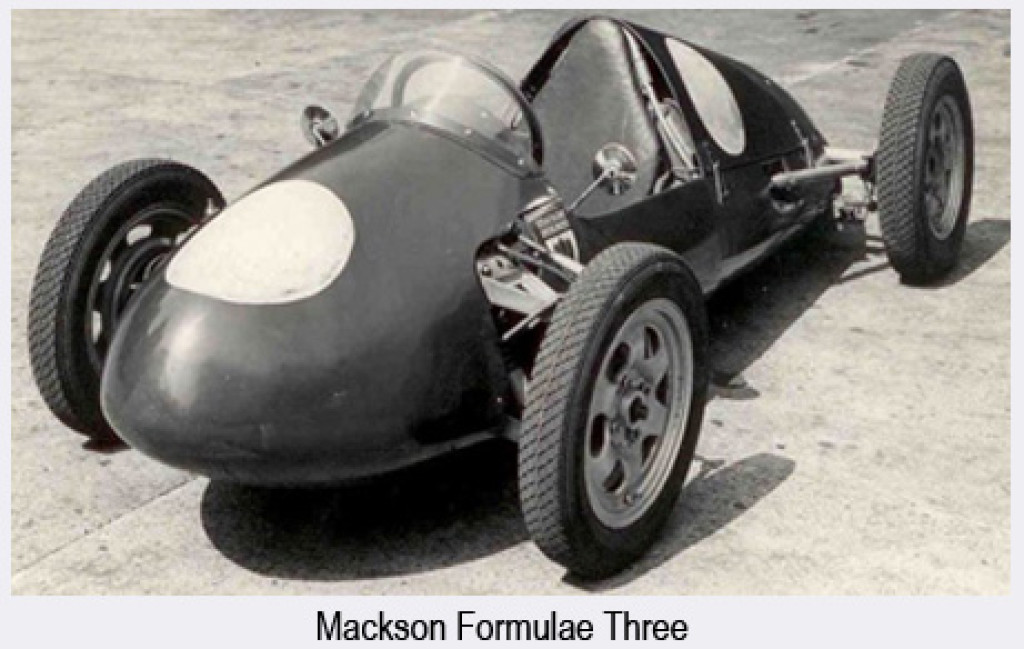
In 1950 Gordon moved to the Vickers Aircraft Company as Chief Experimental Engineer on the Vickers Valiant Project.
I cannot find how he obtained his engineering qualifications.
At the same time as Bedson was working for Alan Brown as a mechanic on Alan's racing cars and he became interested in designing racing cars. Together with 'Mac' Mcgee Gordon Bedson designed the successful Mackson The name was a combination of Mac and Bedson. It was powered by a Norton 500cc twin engine. He also designed John Cooper's 1100 Cooper JAP. Stirling Moss was driving a Kieft, and the close racing between Kieft and Cooper is a legend in motorsport circles. Bedson left Mackson to join Kieft in 1951. There is an unsubstantiated story that the move came about because Alfred Moss, Stirling Moss' father, asked Gordon to design a car for his son.
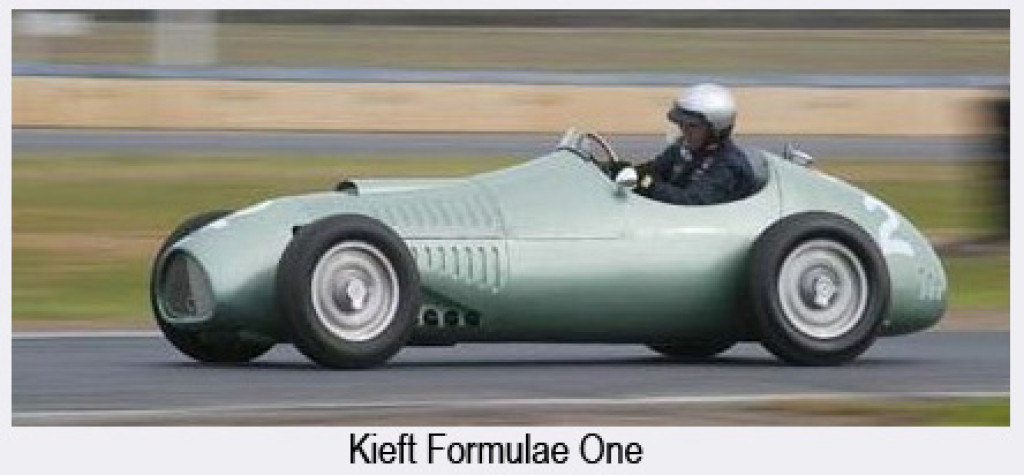
In 1953 Bedson designed the Kieft Formulae One.
It was one of those 'what might have been stories. 'The Kieft F1 was to have been powered by a new engine, the Coventry Godiva. Coventry cancelled the Godiva project because they could only get 268 HP and Ferrari and Maserati were getting 280 HP from their engines. Years later it was found that the Italians had been lying, they were only getting 230 HP. If the Godiva had been released it would have been the most powerful, flexible and compact F1 engine of the era.
The Godiva became the 1.5 FPE (Fire Pump Engine) and later the 2.5 FPE powering the Cooper-Climax Jack Brabham drove to win the 1959 and 1960 F1 drivers championship. Bedson was also responsible for the successful Kieft 1100 Sports.
As a complete change of pace Gordon joined Henry Meadows Ltd of Wolverhampton in 1954 as Export Sales Manager. Gordon to claim later that he was Sales Director but this seems to be a bit of self-advancement. His main duties were to travel extensively internationally-selling generators. (also investigating potential engine production sites-JM).
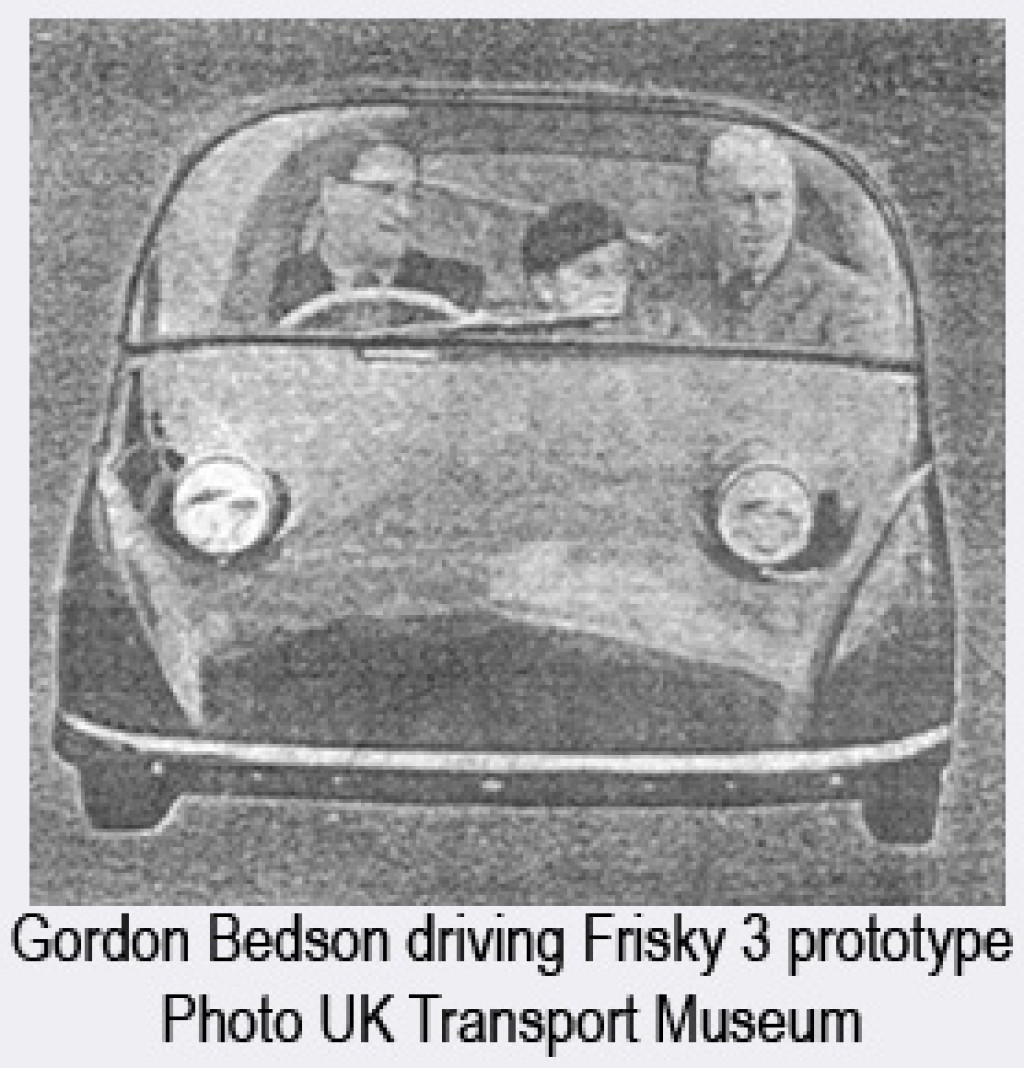
Now the story gets a little murky. A British racing driver Raymond Flower announced a project to build a racing car in Egypt. It was called the Phoenix SR 150. This gave rise to a standard racing driver's quiz night question 'What are Egypt's racing colours? (answer Purple- JM)
With the advent of the Suez crisis, Flower returned to England, and Gordon Bedson claimed to have had a hand in the design of the Phoenix race car Although Bedson had been in Egypt at this time on behalf of Meadows it was not, as widely, reported to work with Raymond Flower on the Phoenix project.
(Gordon was saying with RF at the time along with Lord Raglan who also had a hand in the design of Phoenix 2SR6-JM)
Whilst on a trip to India in 1956 Gordon Bedson designed a 'peoples car' based on Lambretta parts. This had nothing to do with Meadows or the Cairo motor Co. He brought the idea back to Meadows but it was not accepted. It was Raymond Flower who had brought the idea of a peoples car to Meadows in 1956.
Gordon Bedson moved over onto the Frisky project at Meadows after his return from a trip to Poland and built the prototype Gullwing Frisky chassis at Meadows in time for a seven day, 24 hr non-stop testing session at Oulton Park.
The body design was by Michelotti and the chassis by Bedson. The Frisky was an interesting car. It was powered by a Villiers two-stroke engine and the reverse was accomplished by turning the ignition key anti-clockwise which started the engine backwards. The procedure to reverse was to stop, turn off the engine, and turn the key in the opposite direction to restart the engine in reverse. This meant that if turned the wrong way instead of going forwards you hit whatever was behind you. If you had the nerve you could drive as fast in reverse as when going forwards, not recommended!
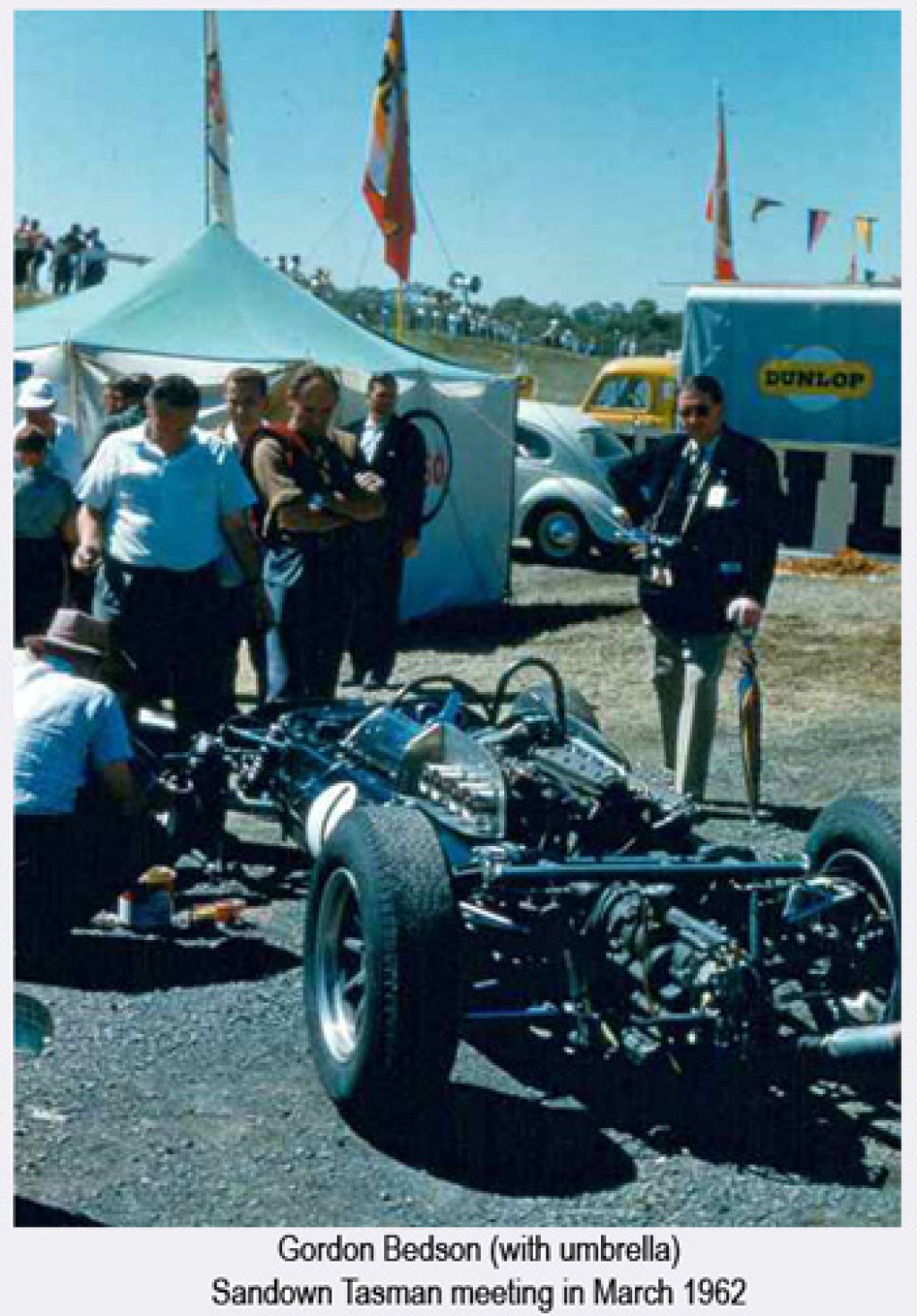
A 'Sunday drinking partner' of Gordon remembers Gordon thus 'Gordon was a good lad and he was straight that?s the point of it. I liked him because of that he was an honest man and a pleasure to be with I can?t find anything wrong with him except that he was a mad bugger' (see the tale of his trip in the Frisky Sprint with Gordon ?JM)
Bedson then went on to design the Sprint. The Sprint design was all Gordon Bedson and Michelotti had nothing to do with the body design.
At the British Motor Show in 1958, Gordon Bedson was headhunted by the Lightburn company of Australia to design a small car for them and migrated to Australia to join Lightburn's in 1959
.
At Lightburns he designed and built the Zeta Sports,.and also a Saab based Sports car. Lightburn argued with Saab and the project was cancelled at the last minute.
The Zeta sports did not go on sale for 3 years and GB fell out with Lightburn and left.
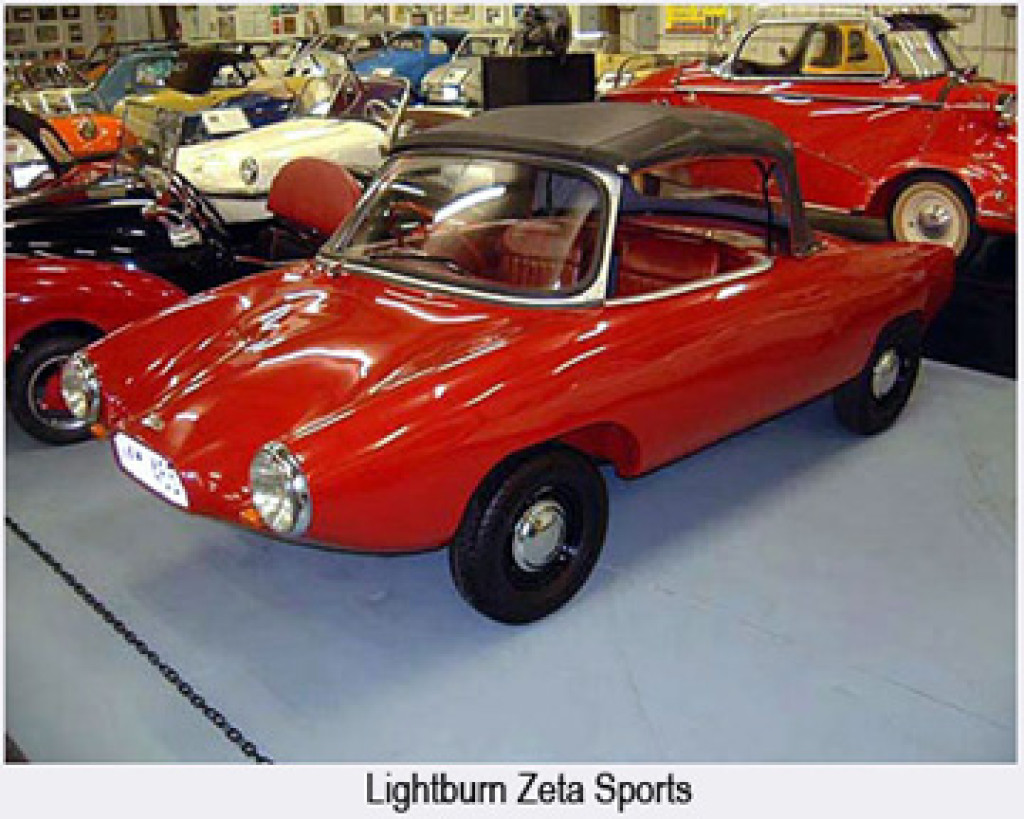
Contrary to most reports John Meadows says that Meadows never sold the Sprint or any of the technology to Light burns. The Zeta Sports was all Lightburn under the direction of Gordon Bedson. The Lightburn Sports had a Fickel and Sachs 494cc 28 hp two stroke motor and a top speed of 128 kph. Light burns had a series of Alfa Romeo dealerships and when the Zeta Sports was released in 1964 attempted to sell the Sport from the Alfa showrooms. They sold a total of 28
For a complete change of pace Gordon Bedson now joined the Diplomatic Corp as a Promotions Executive for the Australian Trade Association. This lasted from 1961 to 1966.
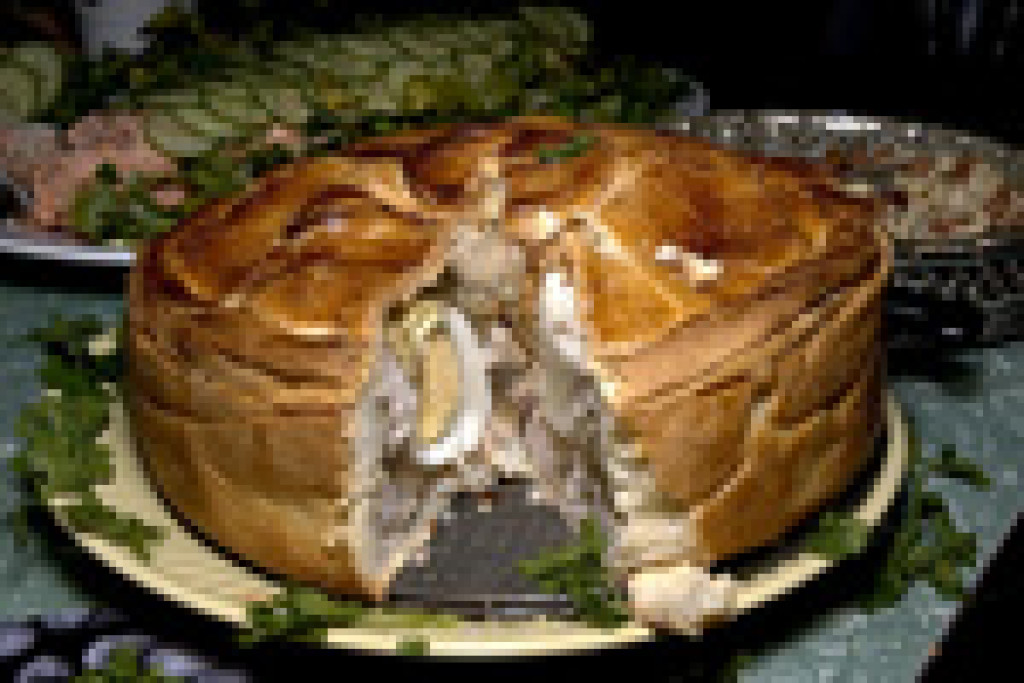
The next period of Gordon's life was as a restaurateur. He opened the 'High Bonnet' on the Gold Coast that was a nightly meeting place for the Bruce McLaren racing team and anyone else involved in motor racing. He had the reputation of being an excellent chef as well as the telling of racing tales tall and true.
Later the Restaurant was sold and Gordon moved to Armidale, NSW to manage a restaurant called the 'Moore Park Restaurant' It was whilst working at Moore Park that Gordon re-kindled his love of flying and built an Evans EP 1 ultralight.
With Des Critchlow, who Gordon had met on the Gold Coast and persuaded Gordon to move to Armidale, he moved to Bundarra in Northern NSW to build ultralights and resumed his pre-war occupation of manufacturing wooden aircraft propellers.
Gordon was one of the one-two people outside major manufactures licensed to hand-make propellers for Tiger Moths, Austers and homebuilt aircraft. The propeller making business was very successful and Gordon was an excellent craftsman.
In one of the unconfirmed references, there is the statement that at this time he also started and run successfully Australia's first polystyrene factory.
In 1948 Gordon Bedson had designed a small lightweight aircraft that was never built. He resurrected the design as the Resurgam. I have two versions of the translation of Resurgam. One is 'From the ashes I shall rise again', and the other simply 'I shall rise again.' The idea was that there would be a ground trainer version like the ground trainers used by the pre-war German gliding movement, and a flying version. The ground trainer was a resurrection of his earlier ideas from the 1930s but never eventuated.
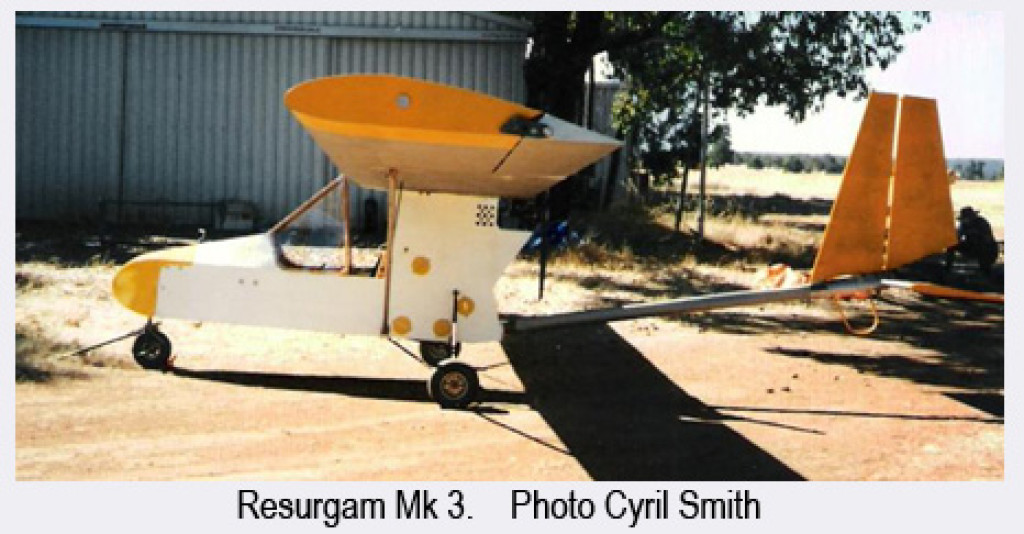
The prototype Resurgam was built in 1979 under ANO 95.10 and had to be under the all-up weight of 180 Kg. This was the same ANO that Colin Winton worked to with the Grasshopper and Sportsman. Unlike Colin Winton, Gordon Bedson took the traditional aircraft construction route of timber and Dacron with aluminium tube rear fuselage.
In 1982 a Resurgam was entered into a race from Biggin Hill in England to Paris. The Resurgam won the speed event against a field of 65 entrants. The rules of the race were that the pilot of the aircraft had to be from the country of origin of the aircraft. This meant that Gordon Bedson was not allowed to fly his own plane because it was Australian designed and built and he was British. Ray Broome flew the Resurgam on its record-breaking flight.
The Australian Airsport magazine in the May/June 1983 issue included an endorsement for the Resurgam from famous Australian racing driver Sir Jack Brabham. The endorsement stated that Resurgam was "the best Micro-light I have flown in any country after a three years search."
There are several versions of this story along the lines that there was a fibreglass version of the Resurgam called the Rousabout under development at Seabird Aviation at the time of Gordon Bedson's death. It was said to have been powered by a 4 cylinder water-cooled engine designed by Jack Brabham.
I couldn't find any collaboratory information until I received this information by email from Sir Jack Brabham
The engine was not designed or made by Jack Brabham, but by Mike Hewland of Hewland Gearboxes. It was a three-cylinder 2 stroke giving 90 hp and was underpowered for the aircraft. Jack Brabham lent the engine to Gordon Bedson who constructed the plane, mostly out of timber, at his home workshop.
This confirms information from Peter Adams of Seabird Aviation that the Hewland engine was not used in the Rousabout but in the two-seat Resurgam (the Magra). The engine of the Rousabout was a 4 cylinder Konig S70 two-stroke radial
.
The SB-2 and SB-3 referred to in the specifications were never built. Peter added that although the Rousabout was based on the Resurgam it was really quite a different aircraft. Picture of Seabird Sentinel and Rousabout.
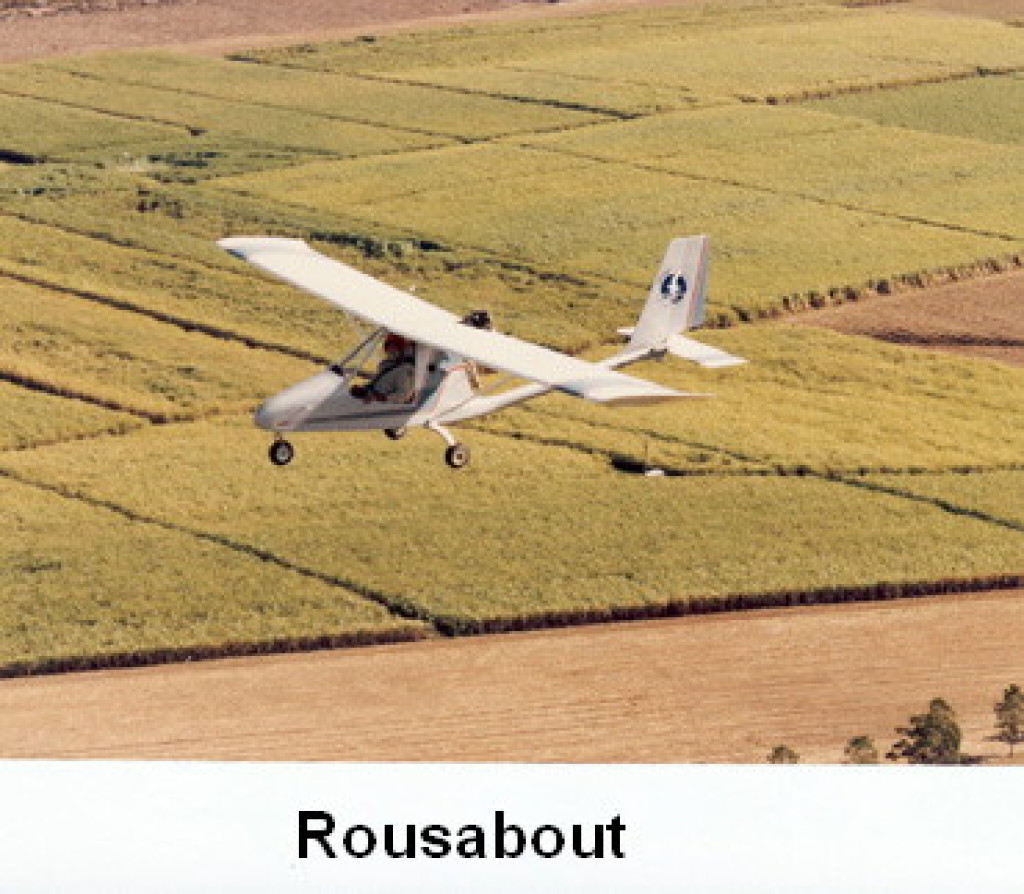
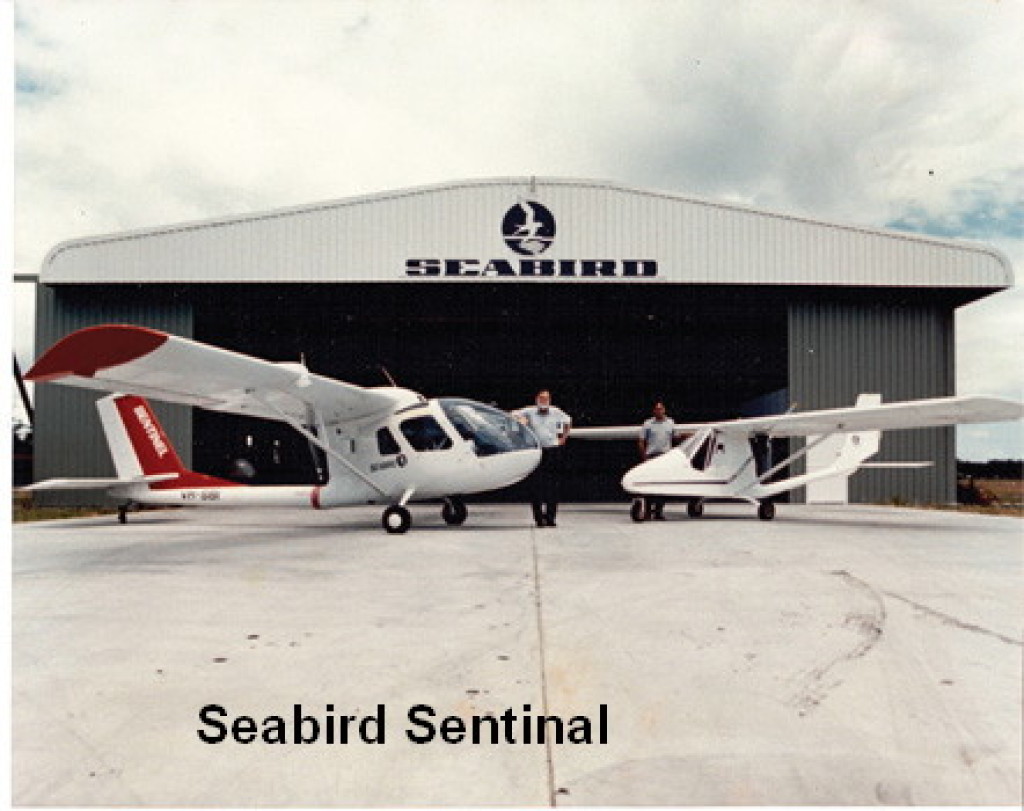
Gordon Bedson died on Mothers Day 1984 on the second flight of a two-seat version of the Resurgam called the Magra. Gordon had flown the Magra briefly 2 weeks before. He had climbed to about nine metres before abandoning the flight. He said that there were problems to be sorted out.
A short time before the accident Colin Winton flew Gordon's Resurgam and whilst taxying out for a second flight heard a cracking sound and taxied back to where Gordon Bedson was standing. The problem was the failure of a cross member connecting the wing struts that had been drilled to allow a control rod to pass through.
The Magra had the same design feature, and the failure of this member is consistent with the reports of the accident.
At the time of his death, Gordon Bedson was a representative of the UAF negotiating to have the ridiculous ultralight regulations of the day amended.
I could only find one photo of the early Resurgam on the net and it was not in a format suitable for copying. See http://www.virtualultralightmuseum.com. This photo is of the original version with the framed rear fuselage
Resurgam Specification'
Resurgam was constructed of timber and fabric in the style of light aircraft of the 1930s. The timber was aircraft-grade spruce and the fabric covering was Dacron. The engine was either the 24 hp (17.9kW) twin cylinder horizontally opposed "Skylark" engine or the 24 hp (17.9 kW) 3 cylinder radial Konig engine. The aft fuselage was constructed of aluminium tubing. Bedson claimed the empty weight as 99 kg and with a wing area of 10.68 sq m the wing loading, based on the 180 kg all-up weight, was 16.8 kg/sq m
Resurgam purchasers had the option of building from the plans or by purchasing ready-made fibreglass components, wing spars, ribs and undercarriage. A Resurgam Builders and Owners Association had been formed, a bi-monthly report discussing aspects of flying and building, was sent to members. By 1983 the tubular cage which formed the rear fuselage had given way to a single large diameter tube supporting the empennage. This modification formed the Resurgam Mk II
Gordon Bedson was a larger than life character, very sociable according to those who knew him, with a wealth of stories to tell. Many of those stories inevitably grew more interesting as time progressed and repetition by others.
Today the available information has become as much myth as fact.
Undoubtedly Gordon Bedson made a great contribution to both motor racing and ultralights but it is often difficult to separate the man from the myth. The resource files relating to Gordon Bedson, newspaper cuttings and the like, are often contradictory. The basic story is there but the facts seem to get embellished from time to time. But with the background of motor racing and flying, two pursuits well known for their enlarging the truth, its not surprising that characters like Gordon Bedson become larger than life.
Two things I can say are true with any degree of certainty is the timeline provided from John Meadows' archives, that has been the skeleton of this story, and that Gordon Bedson was, without doubt, a remarkable man.